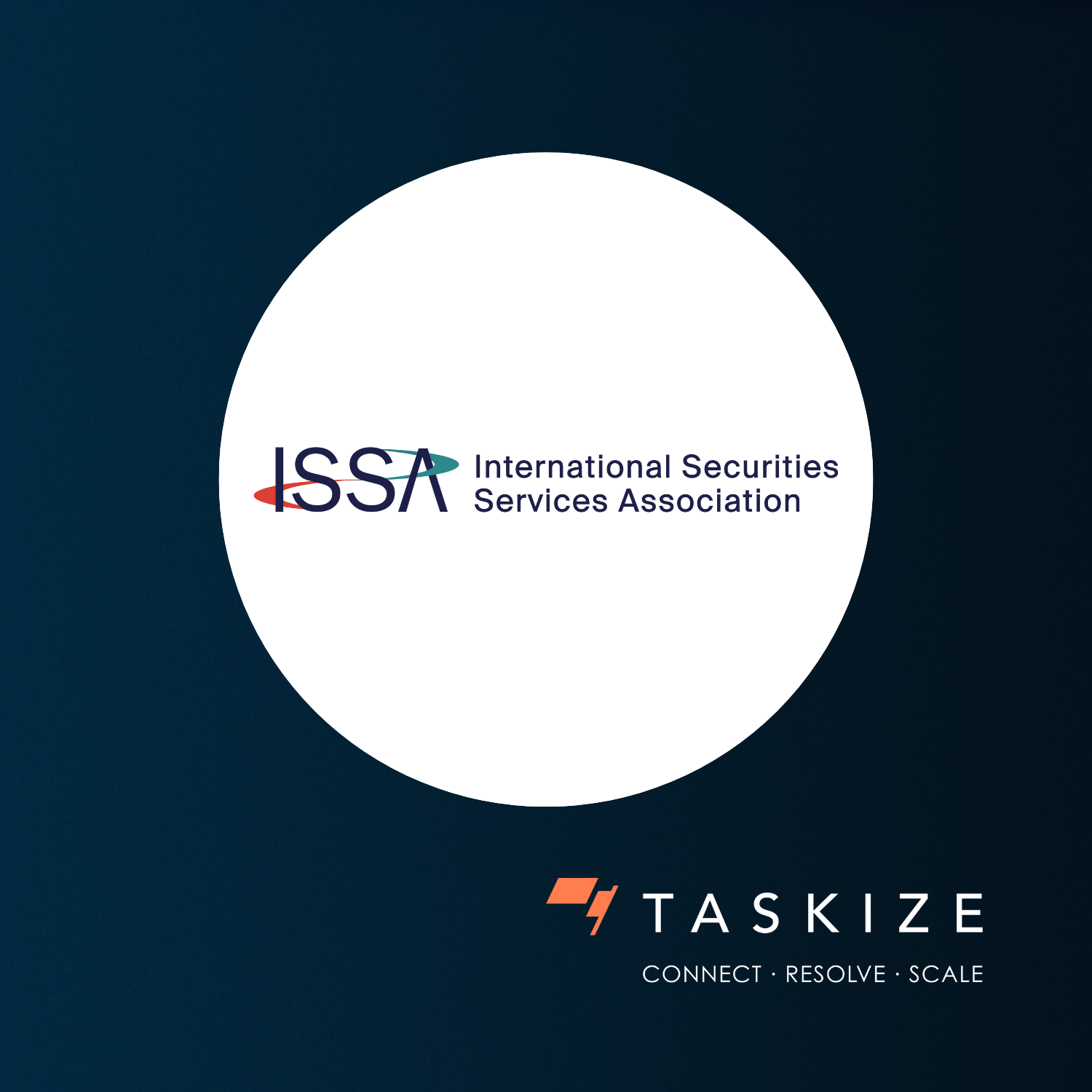Connect · Resolve · Scale
Taskize is modernising the financial sector’s complex communications ecosystem.
The Taskize platform connects all market participants, allowing firms to scale by:
- Increasing operational capacity
- Reducing regulatory risk
- Improving client satisfaction

The Taskize platform
Our web-native SaaS collaboration platform is quick and easy to deploy, and highly interoperable. It's used by investment operations teams worldwide to modernise counterparty communication and workflows.

80%
Same-day query resolution

97%
Client satisfaction using Taskize vs. 57% for email

600
Clients worldwide

88
Countries with firms using Taskize

10
Partner integrations and connectors

99.99%
System uptime

Sectors
The Taskize platform connects custodians to sub-custodians, buy-side to sell-side, brokers to FMIs… and all points in between.

Use Cases
Workflow, collaboration, data and post-trade processing: the four key financial services use cases solved for by the Taskize platform and solution set.
A Euroclear company
Taskize is a Euroclear company. Euroclear is a global provider of Financial Market Infrastructure services, helping its clients settle domestic and cross-border securities transactions and safekeep their investments.
.jpg?width=500&height=500&name=Euroclear-logo-RED%20(1).jpg)
Latest news and insights

'Taskize Wrapped' – 10 key highlights from 2025

FinTech’s DEI Discussions Podcast – Episode with Taskize’s CEO on the future of inclusive leadership

Behind the brand – An interview with the Taskize marketing team

International Securities Services Association welcomes Taskize as newest member
REQUEST a demo
See Taskize for yourself — speak to one of our experts today.
